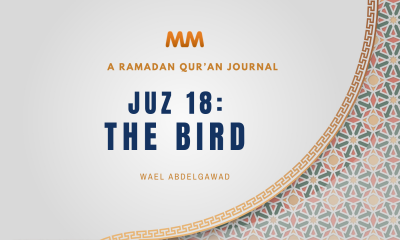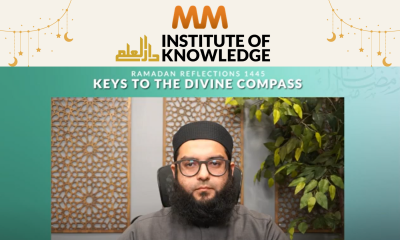For those who are not acquainted with the city of Tarim: It is one of the main cities in the southern Yemeni province of Hadramout. It is located on the left bank of the main pathway of Wadi Hadramout. It is 34km from Seiyun and 356 km from Mukalla, the capital of the governorate. More than 100,000 people live in the city and practice different professions, notably traditional ones like farming and construction. Tarim is famous for its skillful handicraft such as ironwork, welding, carpentry and pottery. The city was named after its architect and builder Tarim Bin Hadramout Bin Sheba. Once upon a time, it was the capital of Kinda Kingdom.
Recently, the city has been in the media spotlight following the declaration of this year’s Capitals of Islamic Culture (CIC). Along with two other cities, Tarim was recognized as the 2010 Islamic capital. Since 2004, the Islamic Educational, Scientific and Cultural Organization (ISESCO) annually selects three cities to be named as the CIC. ISESCO chooses one Islamic African country, another from an Islamic Asian country and the third from an Arabian country. This year’s cities were Monroni of Union of Comoros in Africa, Dushanbe, capital of Tajikistani, from Asia, and Tarim from the Arabian region.
The celebration
In a spectacular opening ceremony held in Tarim on March 8, the year-long cultural activities celebrating Islamic culture were officially inaugurated by Yemen Vice President Abdu Rabo Mansour Hadi, director general of ISESCO, and by senior officials and Arab ministers of culture. The cultural heritage of the city and its role in the dissemination of Islam were presented to the massive audience through an opera performance.
Yemeni Minister of Culture Mohammed Abu Bakr Al-Maflahi was quite content with the turnout.
“The high level of participation reflects the interest in our work in Tarim. We have planned an extensive program, including the Inshadd festival, Malaysian, Turkish and Tunisian cultural weeks, photos exhibition and other 200 cultural activities that will continue for a year,” he told Arab News.
“Like other capitals which were carefully selected for their role in serving the Islamic culture, Tarim was chosen for its religious schools and its transparent relationship with other people.”
Abdulaziz Altwaijri, director general of the ISESCO, said that there are certain criteria for any city to be chosen the capital of Islamic Culture.
“It has to be a historical city with great contributions in serving the Islamic culture and it should host historic monuments, like buildings, castles and Zawyia (prayer rooms).
In addition, it should have a good record in manuscripts and the scientific contributions.”
Altwaijri told Arab News that all these qualities were found in the city of Tarim: “The ISESCO contributes in supporting the ceremonial efforts through arranging workshops, art exhibitions, and we also give academic support to the organizers. We also take part in the reservations efforts of the selected city’s landmarks.”
“Tarim is a very beautiful city and I had read about it before I came here,” he added. “I felt great quietude in the city. The people here are good, generous and hope they will follow the path of their fathers in spreading Islam. The city’s historic monuments need more attention from the concerned people in the country.”
Altwaijri added that the selected Islamic culture capital could gain benefits.
“When any city in declared as a capital it gets exposed to the Islamic world and information about the city in three language, Arabic, English, and French can be viewed on the ISESCO’s website,” he said.
Specialty of Tarim
What makes Tarim stand out among the rest is its undeniable role as a national and international intellectual city.
From here, thousands of people headed to places far away to spread the world of God. Tarim’s people significantly contributed to the spread of Islam throughout East Asian countries through peaceful means. Since the end of the fifth century and into the beginning of the sixth century AH, groups of citizens from Tarim such as scholars, merchants, and laborers left the city to India, Indonesia, Singapore and East Africa. The host places have born the hallmarks of earliest Hadrami missionaries. Thousands of people are descendants of the tribes originally from Tarim.
For centuries, the people of Tarim haven’t needed to exert any effort to seek knowledge at a time when many cities were living in the darkness of literacy. Knowledge was accessible to all. In the early years of last century, magazine and newspapers of Al-Ikha’a, Okaz, Al-Sail, contributed to the intellectual renaissance in Tarim.
Dar Al-Mustafa is one of the modern Islamic institutions for Islamic studies. It was founded in 1993 and is run by Sheikh Ali Al-Mashhour Bin Hafeed. Hundreds of local and international students study in the institution. Rubat Tarim is another traditional Islamic institute, which teaches students Islamic sciences. It was opened in 1887 and is located in the center of the city. Rubat Tarim has played a part in educating thousands of people from inside and outside Yemen.
The city has an abundance of ground water at low levels and the local people have utilized the water to grow dense palm trees plantations.
In the pre-Islamic era, Tarim was a commercial city. The heavily loaded caravans of incense and spices would stop for trading and to store their cargo. The city is located near the once-famous roads of incense caravans that traveled from the coastal city of Dhafar to Shabwa. The city has maintained many attributes of an ancient city, like narrow streets and old mosques. The exquisite palaces of Tarim are another product of architecture that flourished in Tarim in the past. The family of Al-Kaff, who lived in Indonesia, Malaysia, and Singapore were fabulously wealthy in the past. They brought their wealth home and built some of the most resplendent palaces in Yemen. The palaces brought together the Indian architecture and local building materials like mud and lime. The palaces were left to gather dust for ages due to abandonment. When the city was declared the Islamic capital, the government spent millions of riyals on restoring the palaces, and within a short period of time, life was brought back to them.
Al-Mihdhar mosque lies at the heart of the city. Its 40-meter-high minaret is one of the prominent tourist attractions of the city. The mosque was built from clay and palm trees trunks and covered from the outside with limestone. It was and designed by Abu Baker Bin Shihab and built in 1801 by a locally famous builder Awadh Suleiman Afif and his brothers.















Wael - IslamicAnswers.com
April 16, 2010 at 1:27 PM
I had never heard of Tarim nor of the Islamic Culture Capitals. Very interesting. I was curious to look up the list of the previous Islamic Culture Capitals, and found it here:
http://www.isesco.org.ma/english/culture/culturalPolicies/index.php